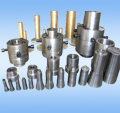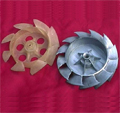

| Address: | PDS Enterprise Inc. 1650 West Artesia Blvd, Suite 278 Gardena, CA90248 |
| Phone: | 1-843-408-0142 |
| Email: | pdsenterprise@gmail.com sales@coolprototyping.com |


Home>Popular Page
60. What is necessary for Precision Plastic Machining?
Precision plastic molding machining requires highly trained workers, the right equipment and strict quality control. If these requirements are satisfied, the plastic can be machined to exact specifications.
Workers need to be skilled in milling, drilling, turning, sanding, forming, grinding, punching and tooling an array of plastic materials. Equipments are also essential, and many are controlled by computers. Machines must operate at speeds up to 1,000 inches per minute while maintaining tolerances of +/- .004 of an inch. Some of the machines necessary are panel saws, CNC routers, CNC machining centers, lathes, turning centers, milling machines, band saws, cut off saws, drill presses, hydraulic presses and sanders.
A large, climate controlled work space and many product inspections throughout the process are necessary for strict quality control. This level of quality control allows you to take your product right from the receiving dock to the manufacturing floor. In addition machines should be maintained and updated frequently.
What is the Process for Precision Plastic Machining?
Lathing:
Many plastic products and parts require lathe tooling to create superior surface finishes and optical clarity. Lathes can create microscopic turns up to 20 inches in diameter. Lathes are equipped with milling heads and sub-spindles, used for secondary operations like removing burrs.
Milling:
Milling plastics results in a high degree of consistency for smooth surface finishes and optical-quality grade polishing. Milling machines use CAD CAM technology for precision work.
Micro Plastic Machining:
For micro plastic machining the tools must have CNC machining precision. Micro plastic tolerances are +/-.0005 or better with exceptional surface finishes. These requirements must be met while producing plastic molds in batches from 100 - 100,000 pieces.
Plastic Polishing:
There are many methods for plastic polishing, including vapor polishing, flame polishing, and mechanical buffing. Depending on the material, and surface desired, a different process will be used.
Flame plastic polishing produces the clearest finish and uses a hot flame to melt the surface of the plastic. This process is usually used on acrylics with flat surfaces.
Vapor plastic polishing produces optical quality finishes and uses a chemical vapor which melts the plastic surface. It works best on polycarbonate, Ultem, polysulfone and acrylics for polishing both internal surfaces, external surfaces and holes.
Mechanical plastic polishing works on any type of plastic, but leaves scratches on the surface, so it is not used for optical products.
Annealing of Plastics:
Annealing or stress relieving of plastics must be performed after plastic machining so the product does not crack. The annealing process places the plastic components in ovens to uniformly relieve the stress on the component. This process greatly reduces the likelihood that a plastic part will crack during operation.
 We are constantly looking for new products in order to grow our business and Invention Home has enabled us to streamline that process much more quickly.
We are constantly looking for new products in order to grow our business and Invention Home has enabled us to streamline that process much more quickly. Marsha Dunmyre
CA, U.S.A
Cool Prototyping Copyright 2008-2009 © All Rights Reserved. Rapid Prototyping






